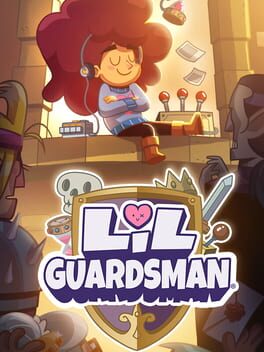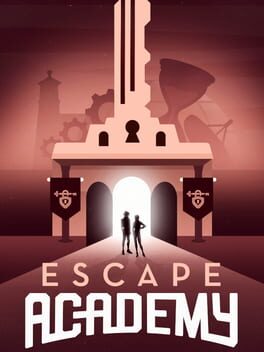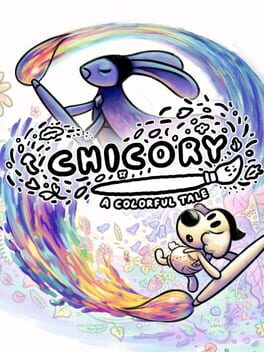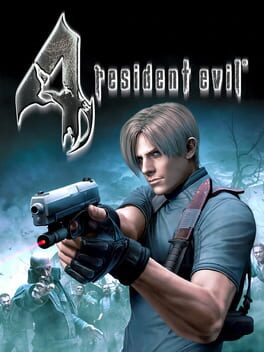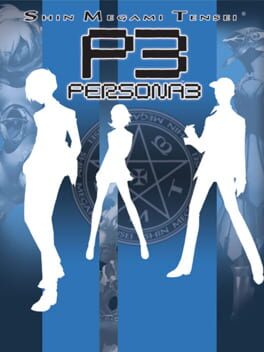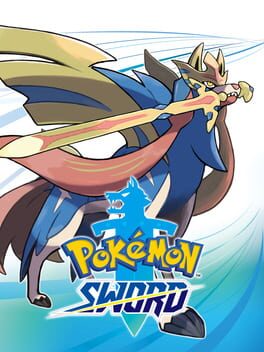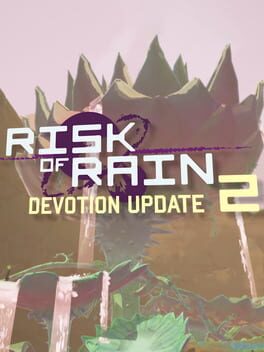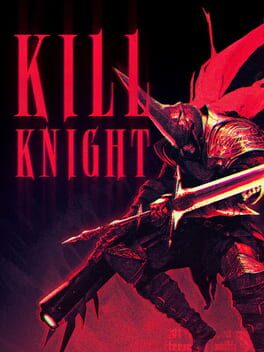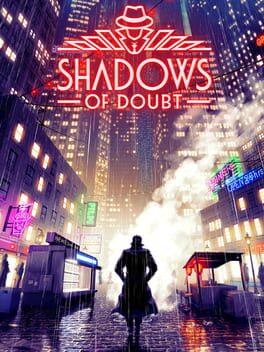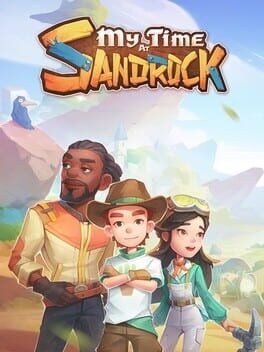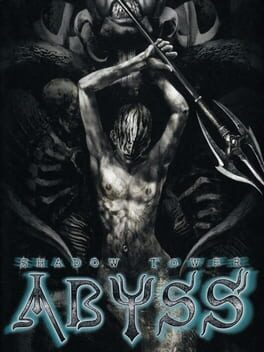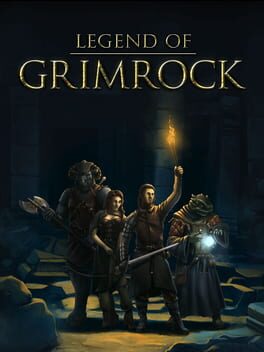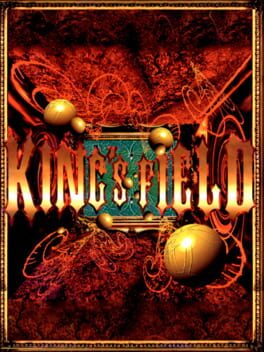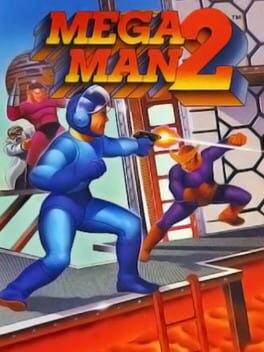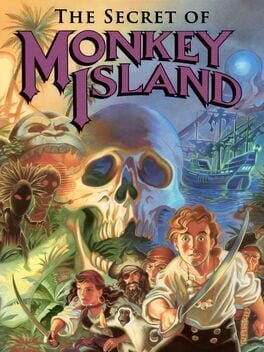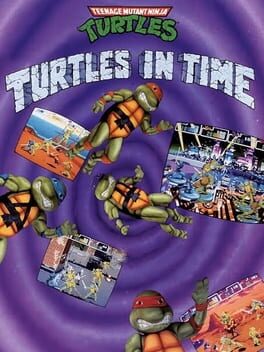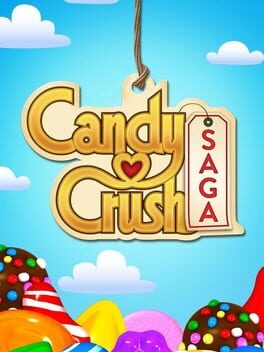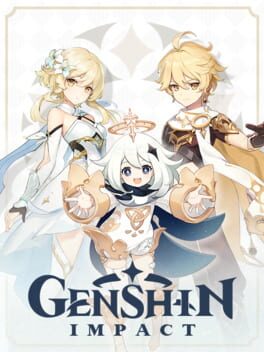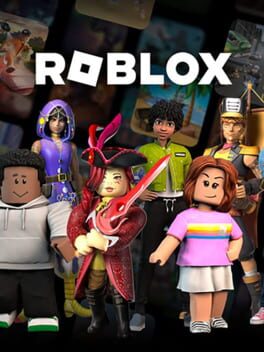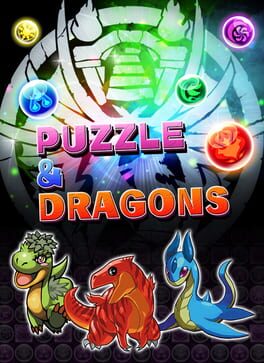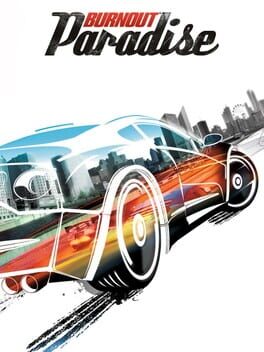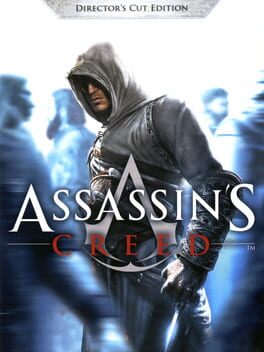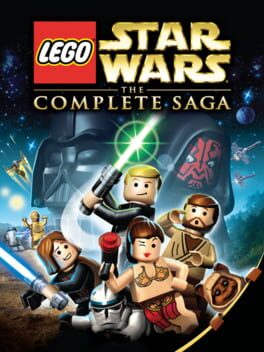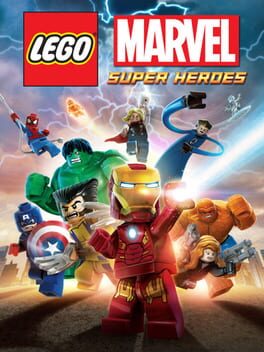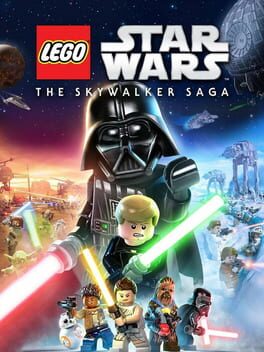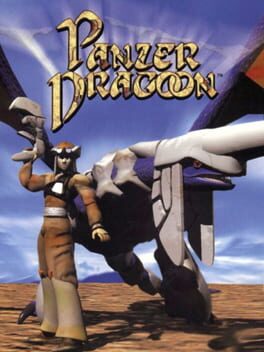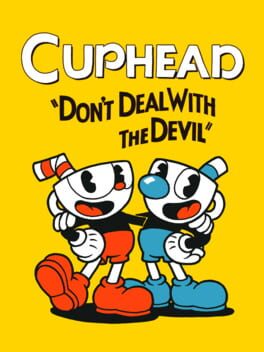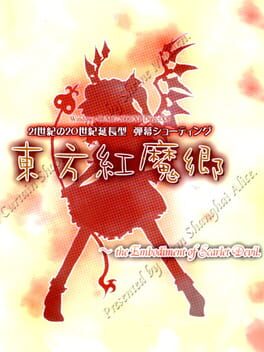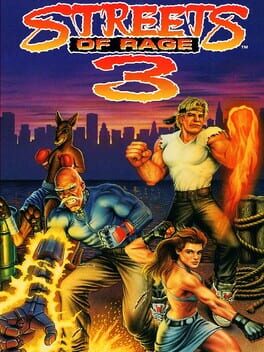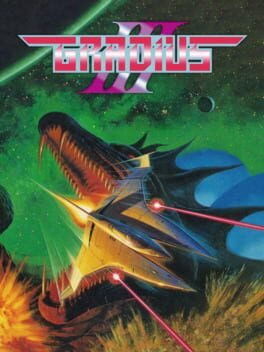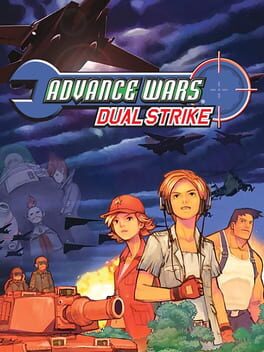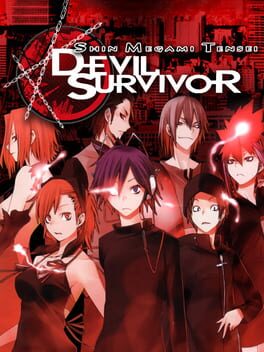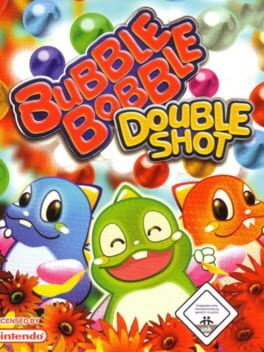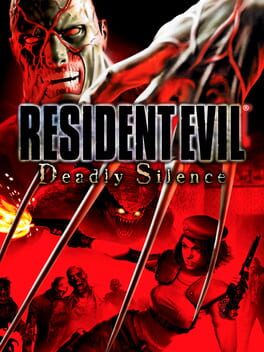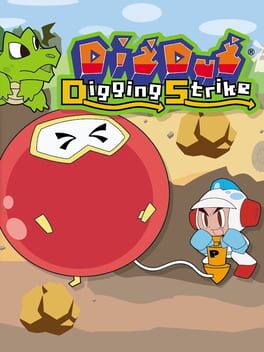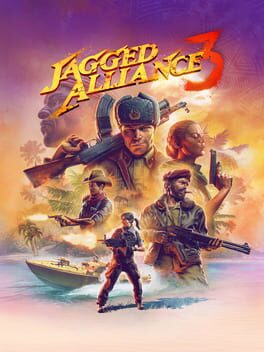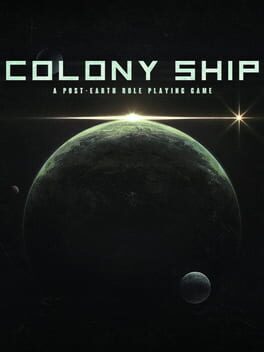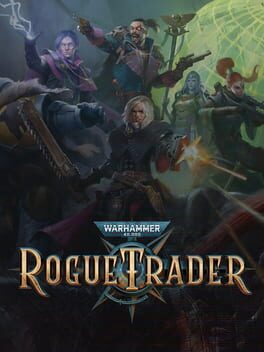Mettenem
BACKER
1104 reviews liked by Mettenem
This is what they were crunching for?
The Callisto Protocol is a man drowning. He’s been swept out by the tides deeper than he can swim, and now I feel compelled to go and be the one who drags him back to shore. I’m not looking forward to it as I swim out there. This always ends badly. I know he’ll kick, and flail, and panic, and drag me under with him. But something compels me. I dip beneath the waves, gliding on the current. Every kick is met only with more water, never ground; it’s been a while since either of us has been able to touch bottom. I get to the man. All of the dread that I felt swimming up to him — the growing pit in my stomach warning me that he’d kill us both — fades as I get a hold of him. He’s calm. He doesn’t fight. He wants to be rescued, and he's coherent enough to tell me as much. So much worry on my end, and for nothing. We’re both going home, and my doubts were unfounded. The two of us make our way back to the shallows, and my heart swells. Nobody’s gonna believe this. I get to be the one who brings back the guy that everyone thought couldn't be saved.
We make it from the depths to a point where the ocean reaches our shins, at which point the man panics and submerges my head in about two feet of water until we both die. I knew I should have let the fucker drown.
What we’re looking at here is a bad start that leads into a remarkably strong middle, hitting an impressive stride just in time to trip and break both legs three hours before the finish line. But that middle section is good. It’s really good. It’s so good that I was ready to come in here and lord a massively inflated score over the heads of all of the doubters who didn’t get it. Reality hits hard when it hits, though, and there’s no denying that The Callisto Protocol just runs out at the end. It runs out of ideas, it runs out of money, it runs out of employee morale — it runs dry and it runs empty until the engine shears itself in half.
This is pretty, but a game "being pretty" hasn't impressed me for fifteen years now. Everything since the early-mid 2010s has given me this shrug-your-shoulders feeling of "yeah, I guess it looks good" and spurred little in me beyond that. I know it's a tired truism to trot out — "art direction is more important that graphical fidelity!", as if we don't all know that already — but even games from that era that were trying to look as realistic as the latest titles don't read as being all that different to me today. Honestly, I think the face-scan mocap shit that's everywhere in AAA games these days looks kind of bad; they're all sitting deep in that uncanny valley where everyone's head looks like it's got a video of the actor's face wrapped around it. Even with (perhaps due to an overreliance upon) all of the tech in place, some of these animations look incredibly bad. Here's a shot of Josh Duhamel's character screaming in agony as he gets an implant stuffed in his neck that hurts so bad that he has a heart attack and dies. It's silly. This is not an expression of pain. He's making a YouTube thumbnail face. Fuck, the source of that image is a YouTube thumbnail.
So, yes, this is all very technically impressive, but in practice it's all just bloom and haze and fog and I can't fucking see any of it because someone turned all the lights off. None of this sparks joy. Everything is gray and bland and devoid of life. There's nothing that even remotely scratches at iconic Dead Space setpieces like the Church of Unitology or the cryopod rooms, because the art direction on display is kind of shit. It's a just-so approximation of enough of Dead Space's elements to provoke familiarity, but it's off in a way that betrays the fact that Visceral was a team made up of a lot more people than just Glen Schofield. He isn't Visceral, and this isn't a spiritual successor to Dead Space. It's a spiritual regression.
But as desperately as this wants to stay latched to the teat of Dead Space, it isn't open to those who want the game to be Dead Space. This is a melee-focused system based around dodging, combos, and environment kills; Dead Space is a shooter based around positioning, dismemberment, and, uh, also environment kills. You've gotta meet The Callisto Protocol on its own terms; playing it like Dead Space is a losing position. You should be doing this for everything you consume, by the way. Don't try and cram a work you don't like into a box that doesn't fit it. Play the game that they designed, not the one you wish they'd designed. It took a little readjusting over the course of the entire opening hour of The Callisto Protocol, but I eventually came to understand what it was going for, how it wanted to be played. And I liked it.
Actually, I really liked it.
Combat is simple, but raw enough to be really satisfying once you get the loops figured out. Each fight will take place either as a gauntlet of enemies that pour out one after the other, or as group battles where you'll be caught between three or four monsters at a time. It's a game of dodging, waiting out the combos, finding an opportunity to strike, and then going all-out until you're forced to stop. Weave around a three-hit combo, dole out one of your own that takes the arm off of a monster, get whipped around by another, block his strike, take his legs out, get shoved, pop one with the new space you've been given; it's a wonderful little system that isn't hard to come to grips with, but is punishing enough to mean that eating a bad hit or two will send you back to your last checkpoint. The added complexity comes in the form of your GRP (pronounced as "grip") and your guns, though you'll be rocking with the starting magnum for the vast majority of the game. The GRP can pick up enemies and hazards to toss them around, and your guns are your combo enders. You can also open with gunfire if you've got some distance on the monsters; they've gotta come to you, so you can filter a group down a chokepoint and take one of them out before you're forced to rely on the melee to take you the rest of the way. Combo-ender gunshots can sever limbs, decapitate enemies, force staggers to open up rushdown opportunities, and generally just act as a major force-multiplier to make sure a crowd of monsters is never unmanageable. If you're thinking that this sounds like it's not really a system primed for a horror game, you'd be right. The Callisto Protocol sucks dick at being a horror game. As an action game, though — much like big brother Dead Space — I thought it was great.
Eventually, you'll progress to a point in the narrative where hitting the monsters for long enough will make worms rupture from their body. These worms need to be shot within a fairly tight window of time, or else they'll cause the monster in question to undergo a transformation that makes them bigger, stronger, and faster. You really do not want to let the worms make the monsters evolve. In theory, this is an interesting escalation — you can't afford to drag fights out the way that you could earlier — but as we've seen throughout this write-up, theory is distinct from practice.
In practice, the worms will always erupt from the same place; the generic guys who smack you around will have them erupt from their guts, and the spitters will have them erupt from their heads. These are the primary enemy types that you'll be fighting against for the overwhelming majority of your playthrough, so combat encounters go from frenetic punch-ups where you're desperately trying to make the right call to something that's solved by a flowchart: three or four hits always followed by a gut shot or a head shot, rinse and repeat. There's basically no reason to ever open up by firing your gun now that enemies can heal by evolving, which leaves you the options to fling the enemies with your gravity glove and hurt them a little bit, or to swing at them with the baton. The baton expends no resources, is fast, is always guaranteed to connect, is a safe option, and will open up enemies for the instakill gut/head shot in no time at all. So many tools, and no reason to use any of them besides the fucking stick. Everything was useful only two hours prior, so being boxed in to what's obviously an optimal strategy to repeat on every single monster serves only to squander a system that was working just fine before.
Where things really fall apart, however, is in the third act. Jacob, our protagonist, falls down a gutter or some shit into an underground area where all of the enemies are blind. They've got super-hearing, but they can't see. Firing a shot or swinging at one with your baton may as well spare you the ceremony of kicking off a fight and just reload your checkpoint the second you press the button; you'll get swarmed by too many monsters to deal with, and they'll chew through every resource you have before they kill you. What you have to do instead is pull a page from Joel Thelastofus's book and crouch-walk around while shivving these clicker expys to death. Unlike in The Last of Us, however, the shiv that you get has infinite uses, meaning that you can very easily just crouch-walk around and kill everything without alerting a single enemy. This is optimal. They don't hear you shivving them, even as Jacob grunts and growls and the monsters gurgle and shriek, and there's no reason to sneak past them; they still drop ammo and money and health packs just the same as everything else. If you could just blast your way through this section, it'd be over in thirty minutes; instead, you have to play the most boring stealth section ever devised by human hands and it takes upwards of two and a half hours.
You get back to the regular action combat in time for the game to end, but the damage is more than done at that point. You fight the exact same boss four times in the span of an hour, and his pattern is literally just doing right-hand swings. You hold left on the control stick and auto-dodge everything while shooting him once per dodge. It's so boring. I knew while I was going through the ridiculously long stealth segment that they were padding for time, but repeating the same boss fight four fucking times really gives it away to anyone who wasn't paying attention that they were running on empty. I went from itching for more in the middle act to wishing it would just hurry up and end by the start of the finale.
Jacob gets to the escape pods, meets a zombie warden who's managed to keep his personality (generic asshole), and then the zombie warden does the Resident Evil boss thing where he talks about having superior genetics and then turns into a big meat monster with glowing orange eyeball weakpoints. I'll take the opportunity now to point out that this game was written by two people. The lead writer has never worked on anything else in his entire life. There were five times as many employees dedicated to the face scanning as there were on the writing team. Remember that the facescanning looks like shit, so adjust your expectations for the quality of the writing accordingly. Whatever. Nobody was ever playing this for the story. It's still a weird choice for a game like this, though; with everything being told to you through audio logs and exposition from characters who have a clue what's going on, you'd think you'd want more hands on deck. Then again, the only thing anyone ever seems to say is "Jacob, go to [the place], I'll explain later", so you probably don't need to put too much effort into putting that together.
But my mind keeps wandering back to the thought that the people at Striking Distance were working twelve hour days, seven days a week — and for what? What about The Callisto Protocol demanded such brutal hours for such a long stretch of development? I can't find anything in the time leading up to the game's release that would indicate what was sucking up so many resources; all I've come up with are some vague gestures towards "new lighting techniques" and "haptic feedback", all incidentals that barely add much of anything to a work that's remarkably standard. This cost $160 million to Dead Space 2's 60 million and it looks and plays worse.
There’s an excellent game within The Callisto Protocol, and one that I imagine would have been able to flourish if made under the banner of someone who actually had a clue. Literally all it takes to turn this from mediocre to great is a better manager. Talented people were overworked and underpaid to make something that broadly isn’t good, but shines in parts; had they been treated properly and overseen by a real leader instead of an MBA meathead who stepped down the second shit got hot, they would have made something that could actually eat Dead Space’s lunch. Instead, we got this, and it’s begging for Dead Space’s scraps.
Glen Schofield can go fuck himself.
The Callisto Protocol is a man drowning. He’s been swept out by the tides deeper than he can swim, and now I feel compelled to go and be the one who drags him back to shore. I’m not looking forward to it as I swim out there. This always ends badly. I know he’ll kick, and flail, and panic, and drag me under with him. But something compels me. I dip beneath the waves, gliding on the current. Every kick is met only with more water, never ground; it’s been a while since either of us has been able to touch bottom. I get to the man. All of the dread that I felt swimming up to him — the growing pit in my stomach warning me that he’d kill us both — fades as I get a hold of him. He’s calm. He doesn’t fight. He wants to be rescued, and he's coherent enough to tell me as much. So much worry on my end, and for nothing. We’re both going home, and my doubts were unfounded. The two of us make our way back to the shallows, and my heart swells. Nobody’s gonna believe this. I get to be the one who brings back the guy that everyone thought couldn't be saved.
We make it from the depths to a point where the ocean reaches our shins, at which point the man panics and submerges my head in about two feet of water until we both die. I knew I should have let the fucker drown.
What we’re looking at here is a bad start that leads into a remarkably strong middle, hitting an impressive stride just in time to trip and break both legs three hours before the finish line. But that middle section is good. It’s really good. It’s so good that I was ready to come in here and lord a massively inflated score over the heads of all of the doubters who didn’t get it. Reality hits hard when it hits, though, and there’s no denying that The Callisto Protocol just runs out at the end. It runs out of ideas, it runs out of money, it runs out of employee morale — it runs dry and it runs empty until the engine shears itself in half.
This is pretty, but a game "being pretty" hasn't impressed me for fifteen years now. Everything since the early-mid 2010s has given me this shrug-your-shoulders feeling of "yeah, I guess it looks good" and spurred little in me beyond that. I know it's a tired truism to trot out — "art direction is more important that graphical fidelity!", as if we don't all know that already — but even games from that era that were trying to look as realistic as the latest titles don't read as being all that different to me today. Honestly, I think the face-scan mocap shit that's everywhere in AAA games these days looks kind of bad; they're all sitting deep in that uncanny valley where everyone's head looks like it's got a video of the actor's face wrapped around it. Even with (perhaps due to an overreliance upon) all of the tech in place, some of these animations look incredibly bad. Here's a shot of Josh Duhamel's character screaming in agony as he gets an implant stuffed in his neck that hurts so bad that he has a heart attack and dies. It's silly. This is not an expression of pain. He's making a YouTube thumbnail face. Fuck, the source of that image is a YouTube thumbnail.
So, yes, this is all very technically impressive, but in practice it's all just bloom and haze and fog and I can't fucking see any of it because someone turned all the lights off. None of this sparks joy. Everything is gray and bland and devoid of life. There's nothing that even remotely scratches at iconic Dead Space setpieces like the Church of Unitology or the cryopod rooms, because the art direction on display is kind of shit. It's a just-so approximation of enough of Dead Space's elements to provoke familiarity, but it's off in a way that betrays the fact that Visceral was a team made up of a lot more people than just Glen Schofield. He isn't Visceral, and this isn't a spiritual successor to Dead Space. It's a spiritual regression.
But as desperately as this wants to stay latched to the teat of Dead Space, it isn't open to those who want the game to be Dead Space. This is a melee-focused system based around dodging, combos, and environment kills; Dead Space is a shooter based around positioning, dismemberment, and, uh, also environment kills. You've gotta meet The Callisto Protocol on its own terms; playing it like Dead Space is a losing position. You should be doing this for everything you consume, by the way. Don't try and cram a work you don't like into a box that doesn't fit it. Play the game that they designed, not the one you wish they'd designed. It took a little readjusting over the course of the entire opening hour of The Callisto Protocol, but I eventually came to understand what it was going for, how it wanted to be played. And I liked it.
Actually, I really liked it.
Combat is simple, but raw enough to be really satisfying once you get the loops figured out. Each fight will take place either as a gauntlet of enemies that pour out one after the other, or as group battles where you'll be caught between three or four monsters at a time. It's a game of dodging, waiting out the combos, finding an opportunity to strike, and then going all-out until you're forced to stop. Weave around a three-hit combo, dole out one of your own that takes the arm off of a monster, get whipped around by another, block his strike, take his legs out, get shoved, pop one with the new space you've been given; it's a wonderful little system that isn't hard to come to grips with, but is punishing enough to mean that eating a bad hit or two will send you back to your last checkpoint. The added complexity comes in the form of your GRP (pronounced as "grip") and your guns, though you'll be rocking with the starting magnum for the vast majority of the game. The GRP can pick up enemies and hazards to toss them around, and your guns are your combo enders. You can also open with gunfire if you've got some distance on the monsters; they've gotta come to you, so you can filter a group down a chokepoint and take one of them out before you're forced to rely on the melee to take you the rest of the way. Combo-ender gunshots can sever limbs, decapitate enemies, force staggers to open up rushdown opportunities, and generally just act as a major force-multiplier to make sure a crowd of monsters is never unmanageable. If you're thinking that this sounds like it's not really a system primed for a horror game, you'd be right. The Callisto Protocol sucks dick at being a horror game. As an action game, though — much like big brother Dead Space — I thought it was great.
Eventually, you'll progress to a point in the narrative where hitting the monsters for long enough will make worms rupture from their body. These worms need to be shot within a fairly tight window of time, or else they'll cause the monster in question to undergo a transformation that makes them bigger, stronger, and faster. You really do not want to let the worms make the monsters evolve. In theory, this is an interesting escalation — you can't afford to drag fights out the way that you could earlier — but as we've seen throughout this write-up, theory is distinct from practice.
In practice, the worms will always erupt from the same place; the generic guys who smack you around will have them erupt from their guts, and the spitters will have them erupt from their heads. These are the primary enemy types that you'll be fighting against for the overwhelming majority of your playthrough, so combat encounters go from frenetic punch-ups where you're desperately trying to make the right call to something that's solved by a flowchart: three or four hits always followed by a gut shot or a head shot, rinse and repeat. There's basically no reason to ever open up by firing your gun now that enemies can heal by evolving, which leaves you the options to fling the enemies with your gravity glove and hurt them a little bit, or to swing at them with the baton. The baton expends no resources, is fast, is always guaranteed to connect, is a safe option, and will open up enemies for the instakill gut/head shot in no time at all. So many tools, and no reason to use any of them besides the fucking stick. Everything was useful only two hours prior, so being boxed in to what's obviously an optimal strategy to repeat on every single monster serves only to squander a system that was working just fine before.
Where things really fall apart, however, is in the third act. Jacob, our protagonist, falls down a gutter or some shit into an underground area where all of the enemies are blind. They've got super-hearing, but they can't see. Firing a shot or swinging at one with your baton may as well spare you the ceremony of kicking off a fight and just reload your checkpoint the second you press the button; you'll get swarmed by too many monsters to deal with, and they'll chew through every resource you have before they kill you. What you have to do instead is pull a page from Joel Thelastofus's book and crouch-walk around while shivving these clicker expys to death. Unlike in The Last of Us, however, the shiv that you get has infinite uses, meaning that you can very easily just crouch-walk around and kill everything without alerting a single enemy. This is optimal. They don't hear you shivving them, even as Jacob grunts and growls and the monsters gurgle and shriek, and there's no reason to sneak past them; they still drop ammo and money and health packs just the same as everything else. If you could just blast your way through this section, it'd be over in thirty minutes; instead, you have to play the most boring stealth section ever devised by human hands and it takes upwards of two and a half hours.
You get back to the regular action combat in time for the game to end, but the damage is more than done at that point. You fight the exact same boss four times in the span of an hour, and his pattern is literally just doing right-hand swings. You hold left on the control stick and auto-dodge everything while shooting him once per dodge. It's so boring. I knew while I was going through the ridiculously long stealth segment that they were padding for time, but repeating the same boss fight four fucking times really gives it away to anyone who wasn't paying attention that they were running on empty. I went from itching for more in the middle act to wishing it would just hurry up and end by the start of the finale.
Jacob gets to the escape pods, meets a zombie warden who's managed to keep his personality (generic asshole), and then the zombie warden does the Resident Evil boss thing where he talks about having superior genetics and then turns into a big meat monster with glowing orange eyeball weakpoints. I'll take the opportunity now to point out that this game was written by two people. The lead writer has never worked on anything else in his entire life. There were five times as many employees dedicated to the face scanning as there were on the writing team. Remember that the facescanning looks like shit, so adjust your expectations for the quality of the writing accordingly. Whatever. Nobody was ever playing this for the story. It's still a weird choice for a game like this, though; with everything being told to you through audio logs and exposition from characters who have a clue what's going on, you'd think you'd want more hands on deck. Then again, the only thing anyone ever seems to say is "Jacob, go to [the place], I'll explain later", so you probably don't need to put too much effort into putting that together.
But my mind keeps wandering back to the thought that the people at Striking Distance were working twelve hour days, seven days a week — and for what? What about The Callisto Protocol demanded such brutal hours for such a long stretch of development? I can't find anything in the time leading up to the game's release that would indicate what was sucking up so many resources; all I've come up with are some vague gestures towards "new lighting techniques" and "haptic feedback", all incidentals that barely add much of anything to a work that's remarkably standard. This cost $160 million to Dead Space 2's 60 million and it looks and plays worse.
There’s an excellent game within The Callisto Protocol, and one that I imagine would have been able to flourish if made under the banner of someone who actually had a clue. Literally all it takes to turn this from mediocre to great is a better manager. Talented people were overworked and underpaid to make something that broadly isn’t good, but shines in parts; had they been treated properly and overseen by a real leader instead of an MBA meathead who stepped down the second shit got hot, they would have made something that could actually eat Dead Space’s lunch. Instead, we got this, and it’s begging for Dead Space’s scraps.
Glen Schofield can go fuck himself.
The Milk is Sour
2023
Lil' Guardsman
2024
Papers, Please meets.....Monkey Island? Lil' Guardsman is a super charming, well written game. It's got some flaws with the gameplay loop that drag it down a bit, but overall, this game is able to get passed those issues without problem.
Some of the decisions you have to make feel incredibly arbitrary. Mixed with the grading system the game features, it can be a lil' head scratching with some of the decisions it wants you to make in order to get a perfect grading.
Luckily the game features a pretty forgiving rewind system so you can replay some of these areas without having to do a full playthrough.
It's relatively short for a single playthrough so the flaws and nitpicks are all manageable. Those things aside, Lil' Guardsman is well worth your time if you're looking for something with a ton of offbeat personality and charm.
Some of the decisions you have to make feel incredibly arbitrary. Mixed with the grading system the game features, it can be a lil' head scratching with some of the decisions it wants you to make in order to get a perfect grading.
Luckily the game features a pretty forgiving rewind system so you can replay some of these areas without having to do a full playthrough.
It's relatively short for a single playthrough so the flaws and nitpicks are all manageable. Those things aside, Lil' Guardsman is well worth your time if you're looking for something with a ton of offbeat personality and charm.
I had no sword at all for two and a half hours.
I eventually found Biggoron's Sword on sale for 15 Rupees in the Goron City shop as Adult Link. However, as an incredibly frustrated young Alex learned in 1999, you cannot defeat Ganon in Ocarina of Time with the Biggoron Sword. In order to finish the game, the final blow must come from the Master Sword.
During my first playthrough of this (or any) randomizer, the Master Sword was the very last item that I found. This is what it took for me to find it:
• Both the Master Sword and the Kokiri Sword were in the Fire Temple in optional chests, with the Master Sword's chest requiring the Scarecrow Song to reach it. But I couldn't get to either of those without access to the Megaton Hammer, as the room to the left where you encounter Darunia had no keys in it. (The key to the door on the right side of the entry hall turned out to be in the Boss Key chest)
• The Hammer was in the Gerudo Training Grounds, so I was ultimately gated by my lack of Hover Boots.
• The Hover Boots were in Jabu-Jabu's belly, in place of the Zora's Sapphire. But I couldn't complete that section without the Boomerang.
• The Boomerang was in the moat in place of the Ocarina of Time, but I needed the 3 Spiritual Stones before Zelda would chuck it in there.
• The Kokiri Emerald was in one of the Gibdo coffins in the Bottom of the Well, so I needed the Lens of Truth to discover that.
• And the Lens of Truth was sold by a Business Scrub in Dodongo's Cavern. I got a good deal though, it was only 10 rupees.
Obviously, I had no idea where the Master Sword would be, so this wasn't a plan or a list of instructions I followed, it's just how things shook out. And I had a great time! I used Ship of Harkinian's randomizer, and there are some fantastic options that made the constant back-and-forth scouring of Hyrule more feasible. The most useful ones were unbreakable Deku Sticks (absolutely critical since I didn't find a sword for a while), changing Link's age with the Song of Time, Bunny Hood increasing speed like in Majora's Mask, and ageless items (allowing Young Link to use the Hookshot, for example). I was incredibly impressed with Ship of Harkinian though, and will definitely put more playthroughs into that, randomized or not.
I eventually found Biggoron's Sword on sale for 15 Rupees in the Goron City shop as Adult Link. However, as an incredibly frustrated young Alex learned in 1999, you cannot defeat Ganon in Ocarina of Time with the Biggoron Sword. In order to finish the game, the final blow must come from the Master Sword.
During my first playthrough of this (or any) randomizer, the Master Sword was the very last item that I found. This is what it took for me to find it:
• Both the Master Sword and the Kokiri Sword were in the Fire Temple in optional chests, with the Master Sword's chest requiring the Scarecrow Song to reach it. But I couldn't get to either of those without access to the Megaton Hammer, as the room to the left where you encounter Darunia had no keys in it. (The key to the door on the right side of the entry hall turned out to be in the Boss Key chest)
• The Hammer was in the Gerudo Training Grounds, so I was ultimately gated by my lack of Hover Boots.
• The Hover Boots were in Jabu-Jabu's belly, in place of the Zora's Sapphire. But I couldn't complete that section without the Boomerang.
• The Boomerang was in the moat in place of the Ocarina of Time, but I needed the 3 Spiritual Stones before Zelda would chuck it in there.
• The Kokiri Emerald was in one of the Gibdo coffins in the Bottom of the Well, so I needed the Lens of Truth to discover that.
• And the Lens of Truth was sold by a Business Scrub in Dodongo's Cavern. I got a good deal though, it was only 10 rupees.
Obviously, I had no idea where the Master Sword would be, so this wasn't a plan or a list of instructions I followed, it's just how things shook out. And I had a great time! I used Ship of Harkinian's randomizer, and there are some fantastic options that made the constant back-and-forth scouring of Hyrule more feasible. The most useful ones were unbreakable Deku Sticks (absolutely critical since I didn't find a sword for a while), changing Link's age with the Song of Time, Bunny Hood increasing speed like in Majora's Mask, and ageless items (allowing Young Link to use the Hookshot, for example). I was incredibly impressed with Ship of Harkinian though, and will definitely put more playthroughs into that, randomized or not.
Bit Boy!!
2009
What if Secret Collect was a Pac-Man game
Bit Boy is perfectly emblematic of original WiiWare titles. It plays around with retro aesthetics (incorporating art styles from "4-bit" up through "128-bit"), incorporates familiar gameplay mechanics from arcade titles that most everyone is familiar with, and is really, really short. It's fine!
Bit Boy is perfectly emblematic of original WiiWare titles. It plays around with retro aesthetics (incorporating art styles from "4-bit" up through "128-bit"), incorporates familiar gameplay mechanics from arcade titles that most everyone is familiar with, and is really, really short. It's fine!
Escape Academy
2022
Chicory tries to meld the coziness of Animal Crossing with the action and adventure of Zelda. There are towns to visit, characters to chat with, and portraits to paint; likewise, there are dungeons to delve through and bosses to battle. It sounds great, and in some ways it is, but unfortunately there are a few niggles that dampen the proceedings.
Let's start with the story and characters. The main characters are a highlight -- the dynamic between the protagonist and Chicory is one of the best parts of the game. Both characters have clear motivations and distinct personalities, and their conversations flow between topics like friendship, confidence, and artistry with ease. Reading their conversations is always a joy.
As for the other NPCs, my feelings are mixed. They're all fun and quirky, but I rarely felt engaged when chatting with them. They'd tell me about their problems, or thank me for painting their houses, or talk about what they'd had for lunch, and I'd simply nod my head and wonder how soon I could get back to the main crux of the adventure.
The adventure itself is also one of ups and downs. Exploring the map is fun, and the game offers up plenty of clever puzzles to solve, both mandatory and optional. If you've played a Zelda game, you can expect puzzles in that vein, although often with unique painting-centric twists.
The bosses, on the other hand, were frustrating. Because there are no Game Overs in Chicory, the bosses aren't difficult in the traditional sense, but they do take a lot of hits to bring down. Although the battles look intense, knowing you can't lose drains them of any sense of tension. Just keep swiping with your brush and you'll win eventually.
While I appreciate the story and I'm glad that Chicory exists, for me it feels a bit too at odds with itself. It has an abundance of cute characters but 90% of them have nothing interesting to say; it's a Zelda-like adventure but with boss battles that feel less tense and more tedious. The result is still a strong game, but one that could've been even stronger if it had cut a bit of fat and doubled down on what it does well.
Let's start with the story and characters. The main characters are a highlight -- the dynamic between the protagonist and Chicory is one of the best parts of the game. Both characters have clear motivations and distinct personalities, and their conversations flow between topics like friendship, confidence, and artistry with ease. Reading their conversations is always a joy.
As for the other NPCs, my feelings are mixed. They're all fun and quirky, but I rarely felt engaged when chatting with them. They'd tell me about their problems, or thank me for painting their houses, or talk about what they'd had for lunch, and I'd simply nod my head and wonder how soon I could get back to the main crux of the adventure.
The adventure itself is also one of ups and downs. Exploring the map is fun, and the game offers up plenty of clever puzzles to solve, both mandatory and optional. If you've played a Zelda game, you can expect puzzles in that vein, although often with unique painting-centric twists.
The bosses, on the other hand, were frustrating. Because there are no Game Overs in Chicory, the bosses aren't difficult in the traditional sense, but they do take a lot of hits to bring down. Although the battles look intense, knowing you can't lose drains them of any sense of tension. Just keep swiping with your brush and you'll win eventually.
While I appreciate the story and I'm glad that Chicory exists, for me it feels a bit too at odds with itself. It has an abundance of cute characters but 90% of them have nothing interesting to say; it's a Zelda-like adventure but with boss battles that feel less tense and more tedious. The result is still a strong game, but one that could've been even stronger if it had cut a bit of fat and doubled down on what it does well.
Lies of P
2023
Lies of P never manages to escape the shadow of its inspirations. I’ve played nearly a dozen Souls-likes and none have had this gargantuan of an obsession with Souls aesthetically and mechanically. Anyone who has seen gameplay will go “haha, Bloodborne,” but it’s actually a blend of a majority of FromSoftware’s modern catalog.
I could sit here drawing hundreds of lines on a whiteboard connecting how much of this game wears its inspiration on its sleeve, but I don’t particularly care to focus on that flaw: This is my favorite non-FromSoftware Souls thus far, and while Neowiz’s overreliance on familiar genre tropes saps memorability from the journey, I’m teeming with excitement for this developer’s future and this was a truly wonderful (albeit painful) 35-hour journey.
Lies of P makes a strong case for itself with the tightest mechanical foundation in any Souls-like, only matched by Team Ninja's Nioh—and even then, I enjoy playing Lies of P far more. It is the first FromSoftware-inspired title to realize the potential of the most exhilarating moments in that iconic franchise.
I was also in shock experiencing the game’s high difficulty. Souls-likes are often easier, which I attribute to the lack of fluidity in most of those titles. It’s hard to justify a deeply challenging experience when your game feels like shit to control, yet Lies of P pulls no fucking punches. This is one of the hardest games I’ve played.
Several bosses, level design quirks, and enemies match the oppressive difficulty of Bloodborne: The Old Hunters and Dark Souls 3's DLC. Hitting credits was accompanied by a massive sigh of relief. I'm still in awe by how intensely this game had sharpened me; I had to ascend to Godhood during the finale to come out of the other side.
The consecutive perfect parries I was pulling off considering the game’s exceptionally tight parry window can only be explained by the birth of a sixth sense. I experienced short bursts of what it felt like to become superhuman, and I was shaking during the final moments of many boss fights. It has been a long time since my heart has pounded that hard.
Several bosses took me 10+ tries, with six or seven in particular taking more than an hour each. The longest I spent on a single boss was around two hours and thirty minutes, although this was because that fight in particular forced me to get good at the game.
It’s not just frustrating difficulty for the sake of it, either (excluding one awful boss). Lies of P justifies its intensity with fantastic fights and over-the-top visuals that will certainly stick with me. If you love the unhinged move-sets and animations from Dark Souls 3, Bloodborne, Sekiro, or Elden Ring, you will feel right at home here. A few in particular are likely making it on a list of some of my favorites ever.
Lies of P also benefits from excellent mechanical additions. I initially thought weapon durability would be a novelty, but having to manage it within a fight is intense, especially when some bosses are marathons and others attack so fast that there aren’t many opportunities to sharpen it.
Being able to break opponents' weapons by doing enough consistent perfect parries (or attacking them while they’re blocking) is an incredible feeling, especially because it can greatly reduce their reach and lessen the damage they deal. Being rewarded with a fundamentally easier fight because you took the time to learn parry timings is awesome.
Parrying to regain health is similarly brilliant, alongside the absolute clutch addition that allows you to restore healing items if you’re out by hitting enemies enough. I have pushed through a good few bosses by being consistent in my defense and offense to restore Pulse Cells. Bosses even restore health passively through a faded red bar, which always puts the pressure on the player to be aggressive.
There’s also a posture system similar to Sekiro, where parrying and dealing damage will gradually whittle away at an enemy or boss. When you break their posture, you can deal a fatal strike; it won’t kill them nor remove a full HP bar like Sekiro does, but it deals a great amount of damage and resets their passive healing bar.
I also love that the weapon system allows you to separate the hilts and blades to combine them into whatever monstrosities you please. I’ve seen some really funny stuff out there, and through my own experimenting, there’s tons of potentially goofy combos. I wish it was easier to spec into other weapon types, but that’s just a normal Souls issue.
The expected leveling system is present, but the most vital progression mechanic are P-Organs. Each of the benefits they provide are vital towards making your battles against bosses go from “what the hell” to “okay, this is possible.” Do not underestimate how important those buffs can be. Two in particular are somewhat overkill because they are necessary to make the dodge not feel like ass; Neowiz probably should have just made that part of the base dodge.
And while the game has a lot of love for Soulsborne aesthetically, many moments do far more with it than just brushing the surface level. Running through abandoned train stations, underground malls, and industrial factories battling carnival-esque puppets, toys brought to life, or gigantic mechanical monstrosities absolutely ruled. Quite a few designs are incredible, and I found that the more Lies of P strayed from what I’m used to in Soulsborne, the more engaged I was. Really makes me hope the next Neowiz title relies less on those tropes, as this game’s most original ideas are phenomenal.
In particular, Lies of P has a mechanic where you rest in a hotel and listen to music. Throughout the game you find vinyl records acquired by either completing quests or killing certain enemies. Return to Hotel Krat, pop that bad boy in, and enjoy. It's a refreshingly unique concept for a game that is so clearly in love with FromSoftware. Actively inviting the player to just sit there and enjoy some good tunes seems simple, but it’s the best.
I’m a bit mixed on the soundtrack. The songs you play on the vinyl are wonderful, but the boss music is too Bloodborne with its epic orchestra and intense choir. Lies of P’s aesthetic differences call for a different sound. The world has a somewhat modern, European-town setting and it’s mostly focused on a steampunk, clockwork feel. One song that appears within the world stands out to me, as it's related to an in-world character's performance, and it's absolutely beautiful. Stuff more in that line would have really worked. Yes, I would happily listen to a lady serenading me in French during a boss fight.
The ending is sincerely beautiful. The way this narrative plays with the most notable aspects of the traditional Pinocchio story and weaves it into the narrative is brilliant. Questioning the humanity of puppets and the nature of the "I want to be a real boy" concept is the core of this story. It has some parts of the "less is more" cryptic storytelling in Soulsborne, but the main narrative beats are clear and compelling. I won't go much further into story spoilers, but I have a lot great things to say about it.
Lies of P is a grand time. It might lack originality, but it makes up for this in execution. It’s the closest a Souls-like has come to capturing FromSoftware’s magic and I could see myself bumping this up to a 4/5 with more reflection. I cannot wait to see what Neowiz makes next.
I could sit here drawing hundreds of lines on a whiteboard connecting how much of this game wears its inspiration on its sleeve, but I don’t particularly care to focus on that flaw: This is my favorite non-FromSoftware Souls thus far, and while Neowiz’s overreliance on familiar genre tropes saps memorability from the journey, I’m teeming with excitement for this developer’s future and this was a truly wonderful (albeit painful) 35-hour journey.
Lies of P makes a strong case for itself with the tightest mechanical foundation in any Souls-like, only matched by Team Ninja's Nioh—and even then, I enjoy playing Lies of P far more. It is the first FromSoftware-inspired title to realize the potential of the most exhilarating moments in that iconic franchise.
I was also in shock experiencing the game’s high difficulty. Souls-likes are often easier, which I attribute to the lack of fluidity in most of those titles. It’s hard to justify a deeply challenging experience when your game feels like shit to control, yet Lies of P pulls no fucking punches. This is one of the hardest games I’ve played.
Several bosses, level design quirks, and enemies match the oppressive difficulty of Bloodborne: The Old Hunters and Dark Souls 3's DLC. Hitting credits was accompanied by a massive sigh of relief. I'm still in awe by how intensely this game had sharpened me; I had to ascend to Godhood during the finale to come out of the other side.
The consecutive perfect parries I was pulling off considering the game’s exceptionally tight parry window can only be explained by the birth of a sixth sense. I experienced short bursts of what it felt like to become superhuman, and I was shaking during the final moments of many boss fights. It has been a long time since my heart has pounded that hard.
Several bosses took me 10+ tries, with six or seven in particular taking more than an hour each. The longest I spent on a single boss was around two hours and thirty minutes, although this was because that fight in particular forced me to get good at the game.
It’s not just frustrating difficulty for the sake of it, either (excluding one awful boss). Lies of P justifies its intensity with fantastic fights and over-the-top visuals that will certainly stick with me. If you love the unhinged move-sets and animations from Dark Souls 3, Bloodborne, Sekiro, or Elden Ring, you will feel right at home here. A few in particular are likely making it on a list of some of my favorites ever.
Lies of P also benefits from excellent mechanical additions. I initially thought weapon durability would be a novelty, but having to manage it within a fight is intense, especially when some bosses are marathons and others attack so fast that there aren’t many opportunities to sharpen it.
Being able to break opponents' weapons by doing enough consistent perfect parries (or attacking them while they’re blocking) is an incredible feeling, especially because it can greatly reduce their reach and lessen the damage they deal. Being rewarded with a fundamentally easier fight because you took the time to learn parry timings is awesome.
Parrying to regain health is similarly brilliant, alongside the absolute clutch addition that allows you to restore healing items if you’re out by hitting enemies enough. I have pushed through a good few bosses by being consistent in my defense and offense to restore Pulse Cells. Bosses even restore health passively through a faded red bar, which always puts the pressure on the player to be aggressive.
There’s also a posture system similar to Sekiro, where parrying and dealing damage will gradually whittle away at an enemy or boss. When you break their posture, you can deal a fatal strike; it won’t kill them nor remove a full HP bar like Sekiro does, but it deals a great amount of damage and resets their passive healing bar.
I also love that the weapon system allows you to separate the hilts and blades to combine them into whatever monstrosities you please. I’ve seen some really funny stuff out there, and through my own experimenting, there’s tons of potentially goofy combos. I wish it was easier to spec into other weapon types, but that’s just a normal Souls issue.
The expected leveling system is present, but the most vital progression mechanic are P-Organs. Each of the benefits they provide are vital towards making your battles against bosses go from “what the hell” to “okay, this is possible.” Do not underestimate how important those buffs can be. Two in particular are somewhat overkill because they are necessary to make the dodge not feel like ass; Neowiz probably should have just made that part of the base dodge.
And while the game has a lot of love for Soulsborne aesthetically, many moments do far more with it than just brushing the surface level. Running through abandoned train stations, underground malls, and industrial factories battling carnival-esque puppets, toys brought to life, or gigantic mechanical monstrosities absolutely ruled. Quite a few designs are incredible, and I found that the more Lies of P strayed from what I’m used to in Soulsborne, the more engaged I was. Really makes me hope the next Neowiz title relies less on those tropes, as this game’s most original ideas are phenomenal.
In particular, Lies of P has a mechanic where you rest in a hotel and listen to music. Throughout the game you find vinyl records acquired by either completing quests or killing certain enemies. Return to Hotel Krat, pop that bad boy in, and enjoy. It's a refreshingly unique concept for a game that is so clearly in love with FromSoftware. Actively inviting the player to just sit there and enjoy some good tunes seems simple, but it’s the best.
I’m a bit mixed on the soundtrack. The songs you play on the vinyl are wonderful, but the boss music is too Bloodborne with its epic orchestra and intense choir. Lies of P’s aesthetic differences call for a different sound. The world has a somewhat modern, European-town setting and it’s mostly focused on a steampunk, clockwork feel. One song that appears within the world stands out to me, as it's related to an in-world character's performance, and it's absolutely beautiful. Stuff more in that line would have really worked. Yes, I would happily listen to a lady serenading me in French during a boss fight.
The ending is sincerely beautiful. The way this narrative plays with the most notable aspects of the traditional Pinocchio story and weaves it into the narrative is brilliant. Questioning the humanity of puppets and the nature of the "I want to be a real boy" concept is the core of this story. It has some parts of the "less is more" cryptic storytelling in Soulsborne, but the main narrative beats are clear and compelling. I won't go much further into story spoilers, but I have a lot great things to say about it.
Lies of P is a grand time. It might lack originality, but it makes up for this in execution. It’s the closest a Souls-like has come to capturing FromSoftware’s magic and I could see myself bumping this up to a 4/5 with more reflection. I cannot wait to see what Neowiz makes next.
Tank! Tank! Tank!
2009
Cannot stress enough how much better the arcade experience is compared to the version on Wii U. There's something visceral about the shaking seats and steering wheel, playing co-op with another setup right next to you. I had a blast! The kind of blast I did not have at home on my couch with the Wii U Gamepad!
Lil' Guardsman
2024
Lil' Guardsman is a fun puzzle/adventure game that has wonderful and whimsical artwork which does a grand job at hiding the game's serious nature that it has sometimes!
Your guard shifts let you interact with a variety of characters who present different challenges with the tools given to you as a Guardsman. You can give them truth spray to get informed of their true intentions, a x-ray machine or metal detector to see if they have anything suspicious on them, or you can also use a whip if you'd like! Because why not! These all present different options of ways to achieve a 3 or 4-star rating for that specific guest, which is fun. Sometimes, the way you achieve those 3 or 4 stars is a bit confusing though.
Your character, Lil, is a 12-year old who does have some tough things going on, and some of that stuff gets discovered more as you go through the game which I am glad we got that type of character development as the game progressed.
Overall, Lil Guardsman is a jolly time and not too long! Not perfect in some ways, but still a fun time!
Your guard shifts let you interact with a variety of characters who present different challenges with the tools given to you as a Guardsman. You can give them truth spray to get informed of their true intentions, a x-ray machine or metal detector to see if they have anything suspicious on them, or you can also use a whip if you'd like! Because why not! These all present different options of ways to achieve a 3 or 4-star rating for that specific guest, which is fun. Sometimes, the way you achieve those 3 or 4 stars is a bit confusing though.
Your character, Lil, is a 12-year old who does have some tough things going on, and some of that stuff gets discovered more as you go through the game which I am glad we got that type of character development as the game progressed.
Overall, Lil Guardsman is a jolly time and not too long! Not perfect in some ways, but still a fun time!
129 lists liked by Mettenem
by Game_Event_Lists |
37 Games
by Snigglegros |
74 Games
by _DC |
139 Games
by The_Gaming_Dog12 |
60 Games
by Kat_And_Kash |
20 Games
by Retro |
33 Games
by 87th |
25 Games
by ventilated |
50 Games

